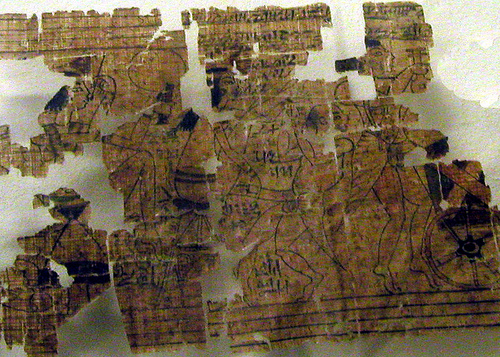There is no shortage of sexual objects from antiquity A few obvious examples spring to mind straight away: the erotic collection of frescoes, mosaics and statues from Pompeii is world-famous, while the Greeks too were masters at outlining explicit sex acts on their red- and black-figure ceramic ware. However the Greco-Roman tradition was not unique.

"Khajuraho Temple is situated at the capital of glorious Chandela capital. Although, Khajuraho is a special attraction for newly married couples and is a wonderful honeymoon location, the village is full of ancient temples. Chandela kings are better known for their generosity and jolly life style and this essence can be found in the architecture of that time also...."
Charlotte Higgins ( The Guardian ):Quite an extraordinary chapter in the already extraordinary story of Mark Lowe and Jordan Wimmer. For those who haven’t been following the lurid details, this is an ongoing employment tribunal case at which Lowe is accused by a former employee of having tried to kill her and humiliate her in various ways. The financier denies accusations of sex and disability discrimination.

---Higgins:Lowe's defence for the text was: "It is burlesque, it was always light-hearted in the first century and it still is now." Well, context is all – and I am certainly not suggesting anything about the spirit in which it was sent to Wimmer by Lowe or what it was meant to convey under that particular set of circumstances – but he's probably right about its original tone.
And now, this: the tribunal has heard that Lowe, 59, sent a woman doing work experience at his company Nomos Capital an offensive text message in the form of a quote from a Catullus poem, the Roman poet of the first century BC.
The line in question (misquoted by the BBC website, and perhaps, for all I know, by Lowe himself) is this: “pedicabo ego vos et irrumabo”. The BBC declines to translate it, merely saying that it “threatens a violent sexual act”, but I am not so coy. It means “I will bugger you and stuff your gobs.”

---After breakfast guided tour of Chandela dynasty temples famous for their spectacular sculptures and carvings of Kama Sutra - the art of making love. Visit the Northern, Eastern and Southern group of temples.--
It’s the first line of Catullus’s very funny obscene poem 16. Addressed to his friends Aurelius “who takes it in the mouth” and Furius “who takes it up the arse” (these are rough translations, gentle readers), it takes issue with the accusation that Catullus’s romantic poems to his girlfriend Lesbia are sissy, lovelorn and effeminate in a robust and earthy way, in the grand tradition of rhetorical invective
…The Turin Papyrus was probably created by a painter from Deir El-Medina village. When French scholar (and translator of the Rosetta Stone) Jean-François Champollion viewed the papyrus in Torino in 1824, he described it in his notes as: “an image of monstrous obscenity that gave me a really strange impression about Egyptian wisdom and composure.” The Turin Erotic Papyrus is a famous (or rather, infamous) 12th/11th century BC Egyptian papyrus, divided into two parts, giving a unique insight into attitudes toward comedy and sex in ancient Egypt. It was discovered in Deir El-Medina in the early 19th century, and has been described as the “world’s first men’s mag.”

"The papyrus is said to represent attitudes towards sex in Egypt that were very relaxed and erotic, yet also discreet and kept behind closed doors. The papyrus was "completed" (since framgments are missing) digitally by Wild Dream Films in 2009, as part of a documentary for the History Channel titled Sex In The Ancient World - Egyptian Erotica. It is on display today in the Museo Egizio in Turin."- Heritage Key
The first section is satirical – it humourosly shows humanized animals performing tasks such as playing musical instruments, climbing trees to pick fruit, quarelling and driving chariots. The second section is erotic – it explicitly shows a bearded man engaging in various different acrobatic sex acts with a female courtesan.
ADDENDUM:
Judith Harris on the Pompeii excavations: Although the 18th-century erudites were familiar with risqué ancient poetry, and possibly had seen vases with obscene motifs and the wall paintings of Etruscan tombs, in which light-hearted banquets were underway and the sex implicit, nothing like this had ever been seen, and surely not in such quantity. From the ruins emerged both mildly erotic and blatantly pornographic scenes, painted on walls and on vases, designed in mosaic tiles on floors, and scribbled onto street-front walls. Gigantic free-standing phalluses were found, and bizarrely erotic objects—terracotta lamps, bronze charms that dangled chimes, sculptures, even furniture. Some suggestive Dionysian scenes were dignified by their mythological associations—but then from the ruins came a series of ithyphallic bronze ragamuffins bearing trays, presumably meant to serve as bread holders, surely disgusting at a dinner table save for the most dissolute. When lapillae were scraped away in a dining room, the floor mosaic in black-and-white tesserae showed a sea scene in which couples and groups of three copulated, in boats.





 COMMENTS
COMMENTS